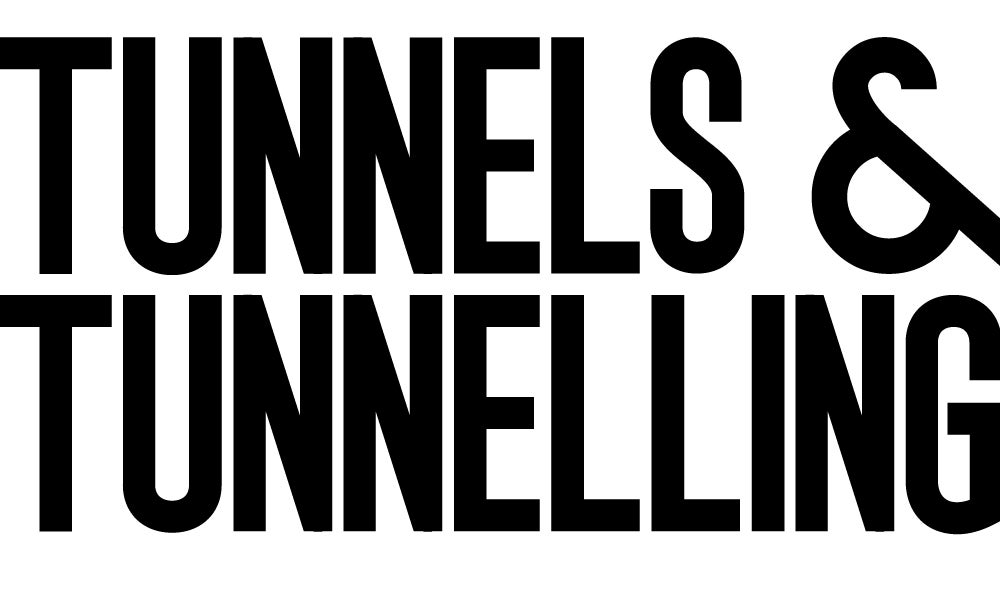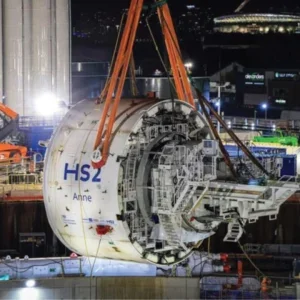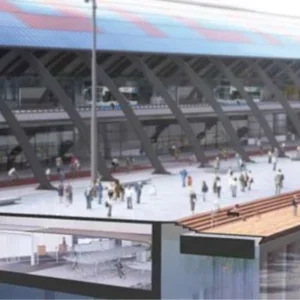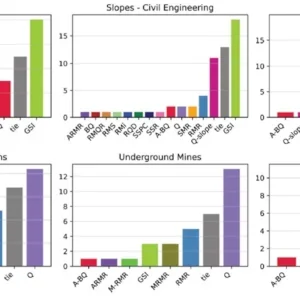Since April 28 1993, Aguas Argentinas has been the sole provider of potable water and sewerage to Buenos Aires, where the population totals 12m. Primary shareholders are Suez-Lyonnaise des Eaux (which is also the operator); Banco de Galicia y Buenos Ayres; and Compagnie Générale des Eaux.
Description of the project
The Buenos Aires potable water distribution system consists of a large treatment plant on the banks of the Rio de la Plata and a network of deep tunnels which carry the potable water to a series of raising stations that supply the street distribution pipelines. Zones out of the reach of this infrastructure rely on water tapped from deep wells for their supply. Increasing pollution of potable water increases the need for centralised distribution from the main plant through the underground river network.
To expand the network, Aguas Argentinas as client awarded the construction contract to a JV of Wayss & Freytag of Germany and Sollazzo Hnos of Argentina to build the tunnel and the raising station shafts. To speed up overall construction time, the client selected and purchased its preferred EPBM by directly entering into a contract with Herreknecht of Germany. Two EPBMs of 4.3m o.d. were acquired to excavate the tunnel and install the 3.5m i.d. lining. Rights of ownership were transferred to the contractor as part of the main construction contract. Design and inspection services were contracted to a JV of Safege and Montgomery Watson.
The contractual scope of works included the excavation and lining of five access shafts and 15.3km of tunnel. All five access shafts will be used for construction purposes; three of them will be used for future connections and two raising stations for the distribution of potable water. The shafts’ i.d.s vary from eight to 13m depending on the service requirements. Access shafts are regularly distributed along the alignment to divide the tunnel into four drives of 3580m, 4200m, 3720m and 3780m in length. Tunnel invert level is almost constantly at 35m below surface.
The tunnel alignment had been carefully designed to pass for its entire length under state owned land to avoid long talks and expensive agreements with landowners. This affected the tunnel by introducing strict geometrical restraints, especially concerning the number, sequence and radius of the curves, which range from 300m upwards.
Tunnel lining consists of a watertight one pass segmental lining with a 26mm EPDM gasket plus an external foam gasket. The lining comprises five segments and one key, with only longitudinal joints bolted. Lining life is contractually fixed at 100 years.
Geology
According to a recent study by Eduardo Nuñez, the subsoil of Buenos Aires can be divided into two parts. The upper levels represent deposits belonging to the Pleistocene era and include preconsolidated silty and clayey soils with lenses of cemented soils, known locally as ‘tosca’. This sedimentary layer is approximately 25-45m thick and is locally referred to as the Pampeano Formation. In the second zone are the ‘Puelches’ fine and dense sands originating from the Pliocene period. In these dense sands is a layer of plastic, clayey silt or silty clay 10m deep. The lower part of the Pampeano was formed by particles transported by the wind in a riverine environment. The sequence from top to bottom is: upper clay; clayey silts with calcareous nodules; lower clay; a clay- sand transition; and clean sands.
During tunnel driving, all the soils belonging to these two formations were encountered. Drives 1 and 3 were mostly excavated in the Pampeano formation, while drives 2 and 4 were mainly in the lower clays with lenses of clean sands under artesian water pressure of up to 2.5 bar. The water level changed slightly along the alignment, being regulated by draw down wells and recharging from the Rio de la Plata aquifer.
Method of construction
The project started with excavation of the five access shafts, each of which was composed of one to four singular shafts for a total of 12 circular structures approximately 35m deep. Access shafts 1, 3, 4 and 5 were excavated using the slurry wall method, considered the most appropriate way to cope with the expected geology, including the presence of clean sands. Crawler crane mounted hydraulic grab clamps excavated the 1000mm thick slot for the diaphragm wall.
To equalise the external water pressure, shaft sinking was initially carried out under water by backhoe excavators and cable clamps. The 2.5m thick, unreinforced bottom slab was also poured under water. At access shaft 5, the presence of clean sands under water pressure at the shaft bottom caused some concern, preventing the proper joining of the diaphragm walls and the base slab. This required remedial works performed by professional divers to achieve the required water tightness. At access shafts 1 & 3, adjacent chambers were connected to allow for equipment passage and TBM assembling and launching. Access shaft 2, close to a similar, 1970s structure, was sunk by traditional methods and concrete lined in 1.2m steps.
Excavation was divided into four drives shown in the profile drawing. Drive 1 was excavated by TBM 1 starting from access shaft 1 and arriving at access shaft 2. The TBM was then retrieved, refurbished and used for drive 3 from access shaft 3 (Moron) to access shaft 4. Drive 2 was excavated by TBM 2 starting from access shaft 1, arriving at access shaft 5, where, after refurbishment, it continued on drive 4 until access shaft 4, where it was finally retrieved.
Access shaft 1 comprised four interconnected shafts and was eventually excavated for construction purposes only. After tunnel completion, the four chambers were back filled, leaving a small inspection access. Both TBMs were assembled and launched from this shaft. The good ground conditions at tunnel level meant that no special measures were required for launching the TBM. Access Shaft 2 was built for connection with the existing underground river network and the retrieval of TBM 1 at the end of drive 1. A permanent flow control gate structure is located at the bottom.
Access Shaft 3, the start of drive 3, is at the far end of the tunnel and consists of four interconnected secant shafts. Two of them will be used for the Moron raising and pumping station, one for a flow control gate structure and the last for a future connection with a planned extension. Access Shaft 4, at the end of drives 3 & 4, was constructed for TBM retrieval and will later be back filled and used as an inspection shaft.
Access shaft 5 was at the end of drive 2 and was the starting point for drive 4. Special arrangements were made for TBM retrieval and launching because of the presence of quicksands at the break in and break out locations. This access shaft comprised three individual shafts, two for the 3 de Febrero raising station and one for a future connection. Shaft construction involved pouring 18 500m³ of concrete for the diaphragm walls, nearly 50000m³ of soil excavation and about 3250m³ of underwater poured concrete for the base slabs.
Tunnel lining
The TBM installed five plus key segmental rings, 1.2m long and 300mm thick. A universal tapered ring had been adopted which enabled the 40mm taper to negotiate curves down to a 300m radius by simply changing the position of the key. The VMT guidance system helped the operators to select the appropriate ring position by considering actual alignment and ring clearances in the tail shield. Only the ring’s longitudinal joints were bolted, and steel dowels in plastic inserts connected each ring. Straight galvanised bolts were used because of the100 year design life in case external excavation were to generate tension stresses in the joints due to the internal water pressure.
The rings’ longitudinal joints were radial. With a male/planar coupling, key + tops joints are parallel, having a male/female configuration. Problems were initially experienced with this configuration of the key and tops joints as tops spalled due to stress concentration at the edges. An improved driving and ring erection procedure substantially overcame the problem. Repairs of spalled segments with high strength, low shrinkage dry pack mortar solved any structural concern to the client’s satisfaction. Compression of the 26mm EPDM gaskets and the presence of suitable annulus grouting almost guaranteed water tightness. The few inevitable joint leakage were treated with localised polyurethane injection, giving good results.
The 125mm gap from the segment extrados and the soil excavation perimeter was promptly filled with a low cement content grout giving the required strength of 1MPa in one day and 3MPa in 28 days. Calcareous filler and hydrated bentonite were added to the basic cement/sand/water mix for improved pumpability. A water reduction/retard admixture allowed for early strength and excavation cycle requirements. Grouting pressure was almost constantly in excess of 2.5 bars to displace the water eventually filling the gap. Check holes and the opening of inspection shafts confirmed that grouting had been successful.
An in-house facility for precast segment production was set up for manufacturing the approximately 76 500 segments required for tunnel lining. A 48-mould carousel produced an average of 18 rings/day in two production shifts. Steam cured segments at 55° C reached a 28 day strength of 52MPa, having a cement content of 380kg/m3. EPDM gaskets were factory installed on each segment. Strict quality control of all materials and production processes was set up to follow each segment from production to installation.
EPB machines
Two identical EPB machines were used for excavating and lining the four drives. Relevant characteristics are indicated in Table 1. Herrenknecht manufactured the two machines according to the client’s specifications to deal with ground that included gravel, marls and boulders. A foam based injection system was installed for soil conditioning. Three independent compressors guaranteed air supply. Total installed power was 1000kW.
The cutting wheel was turned by four hydraulic motors with planetary gear; a tapered roller bearing with composite grease/oil seals supports the head. Eleven cylinders with a 17 490kN increased thrust capacity giving the necessary propulsion force to the machine. All the advancing and ring erection operations were PLC controlled. An integral airlock between the front and rear shield bulkheads was provided in case access to the cutting wheel under compressed air was required, but it was never used as inspections and cutter changes were always performed at atmospheric pressure.
A tight fit between the segment extrados and tail shield was guaranteed by three rows of grease filled wire brushes. Grease pressure was consistently maintained at higher than grout pressure to prevent mortar and water leakage, an important feature when boring through fine sands. Ring erection was performed with a remotely controlled hydraulic erector. At the end of the back-up, a booster fan sent fresh air directly to the front working areas.
Initially, the cutting wheel had a configuration of 17 rippers and 40 scrapers, and a 21% frontal opening. This arrangement, as adopted for drives 1 & 2, implied high thrust and comparatively low advance rates, possibly due to the difficulty of obtaining an unrestricted flow of excavated material from the face to the auger screw through the mixing chamber. In practice, it was very difficult to drive the machine in closed mode due to the active soil pressure in the mixing chamber, and open mode was preferred. During the first two drives, to improve the advance rates and steering capabilities, all 11 propelling cylinders on both TBM were changed, increasing the total permissible thrust by 36%.
During TBM refurbishment at the end of drives 1 and 2, the cutting wheels were modified in agreement with the manufacturer, increasing the openings by eliminating nine face rock tools and relocating almost half the scrapers to take advantage of the new openings distribution. This change and possibly encountering different soil conditions contributed to performance improvement in drives 3 and 4.
As part of the modifications for improving advance rates, some changes were introduced to the soil conditioning system. Initially, both TBMs came with a foam conditioning system but when sandy soils were encountered it was necessary to improve soil conditioning using bentonite injection.
Shaft installation
Shaft 1 at the start and, later, shafts 3 and 5 had been installed (for each TBM) with a full set of equipment to satisfy tunnelling needs. A 120 crawler crane in fixed position took care of muck skip hoisting and unloading. Excavated soil was discharged into a tippler with four trains’ stocking capacity. A CAT 312 backhoe excavator filled 14m³ Astra trucks delivering the soil to a suitable disposal area. A 44m boom, 6 tonne capacity Liebherr tower crane was employed to deliver segments directly on segment cars.
A 30m³/h capacity concrete plant located at the shaft entrance delivered the grout directly into the grout car at the shaft bottom through a steel pipeline. Two axial fans delivered a minimum of 5.5m³/s of fresh air to the TBM. Two or three trains with a Schöma loco, depending on the distance from the shaft to the TBM, delivered all the necessary supplies to the front and mucked out the excavated soil.
Work in the tunnel was carried out in two 12h shifts/six days week. To achieve maximum availability, there was a preventative maintenance shift every other day for a total of 12h/week.
Break out, break in procedures
A total of eight break in, break out events occurred, some of which were particularly challenging. The first TBM, which started at shaft 1, did not pose any problem thanks to the competent Pampeano conditions. A ‘double lip’ Phoenix gasket was installed at the start of drives 1 and 2 as a precautionary measure. Break in at access shaft 2, where competent Pampeano soil was also detected in advance during conventional shaft sinking, was undertaken without employing any special measures. The concrete wall of the shaft was pre-cut at the TBM’s arrival position and a lean concrete slab poured in front. However, when the TBM arrived, the pre-cut wall collapsed and the machine cut its cradle on the concrete slab until the last ring was installed. The TBM was then lifted and transported to access shaft 3.
The break in of drive 2 at access shaft 5 posed a special challenge. The presence of fine sands at the tunnel break in and out position, already detected during shaft sinking, was confirmed during breaking of the diaphragm wall for access at the tunnel eye. This was detected when a few cubic metres of fine sand suddenly erupted from a 5mm cut in the concrete carried by water at 2.5 bar pressure.
Considering the 4.2km length of the drive, precise BT positioning with application of a gasket ring was unlikely to give the expected results. The presence of mixed soil conditions at the tunnel eye, sands at the bottom and silty clay at the top made the tightening block solution difficult to apply and the results uncertain. In these conditions, it was decided to compensate for the shaft external water pressure by filling the shaft with soil and water. A lean concrete block was poured on the shaft bottom slab for TBM support. Before the machine arrived, the shaft was filled with soil to 1m above the tunnel crown, with water to surface level. When the TBM broke through, the high water pressure in the shaft prevented any soil displacement at the tunnel eye.
The TBM then proceeded into the shaft, cutting the soil and the concrete block until the last ring was installed at the diaphragm wall. Mortar grout sealed the gap between the diaphragm wall and the lining, while secondary cement/bentonite slurry and tertiary polyurethane foam injections guaranteed watertightness. The shaft was then de-watered, the soil removed and the TBM retrieved. This procedure – first adopted at shaft 5 – was also used for the arrival of both TBMs at shaft 4, where similar ground conditions were expected.
During the 15.3km drive some special conditions were encountered, posing additional challenges to operation of the machine. When boring through the highly permeable Pampeano Formation in drives 1 and 2, large inflows of water from the auger screw were experienced, considerably hindering the advance because of the time lost for TBM cleaning and lining installation. This was related to the difficulty of operating in closed mode as indicated above.
On two occasions, the advance was stopped because soils contaminated by hydrocarbons were encountered. As a precaution, ventilation was increased and the crew abandoned the machine. Continuous monitoring of the explosive limits (which never exceeded 10%) and the measures mentioned allowed this hazard to be managed.
Related Files
Figure1: Longtitudinal section
Figure 2: Monthly production
Figure 3: operating parameters of the Herreknecht EPB shield






